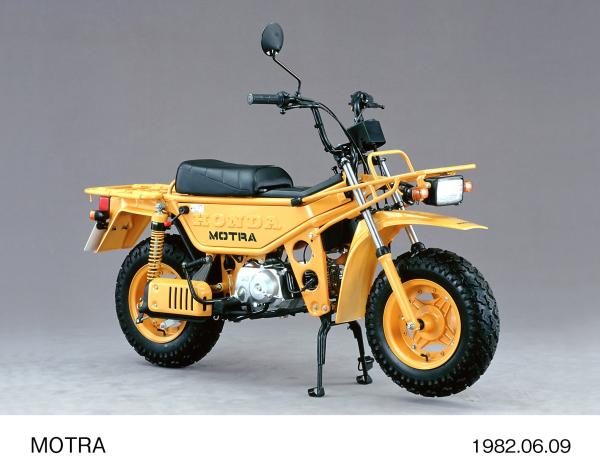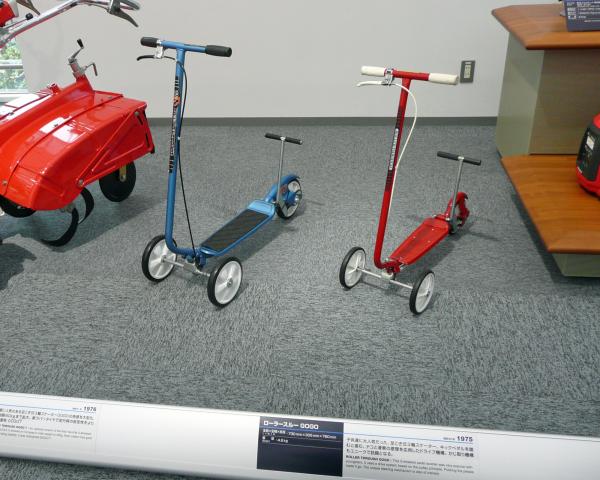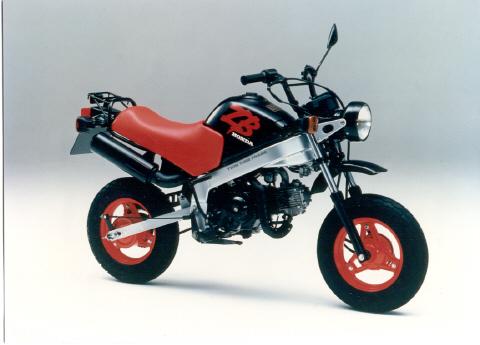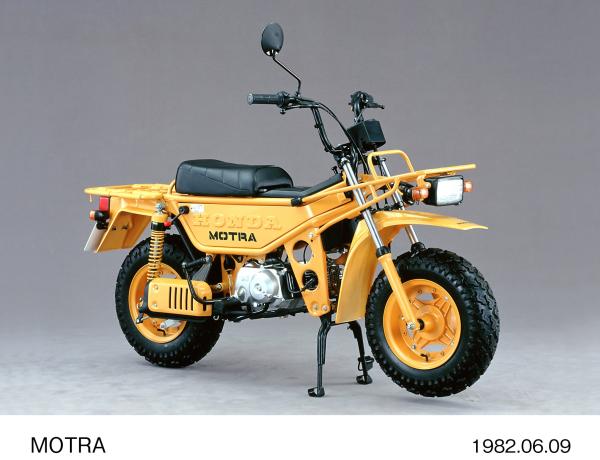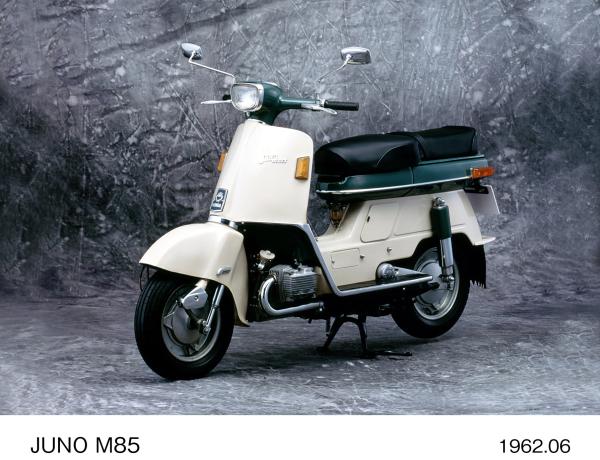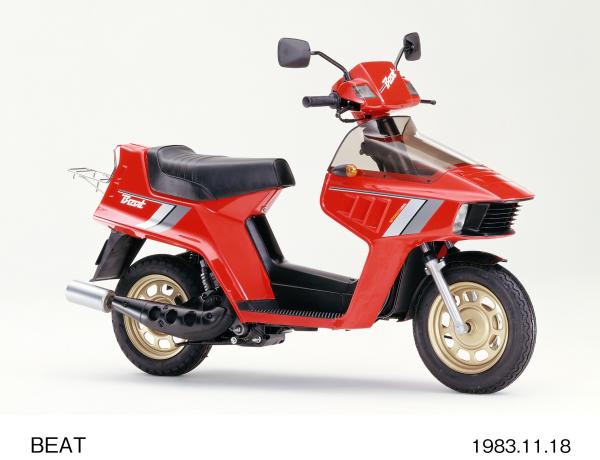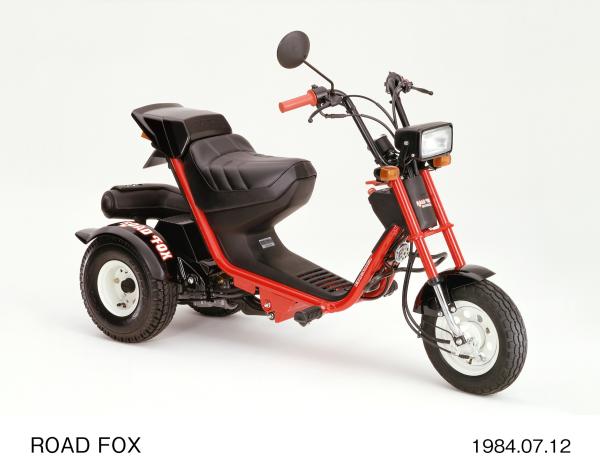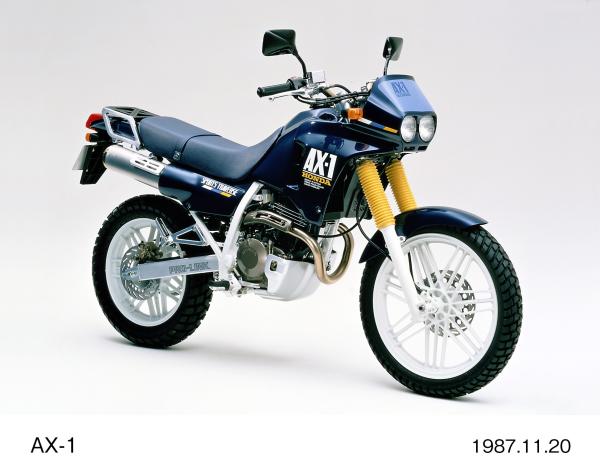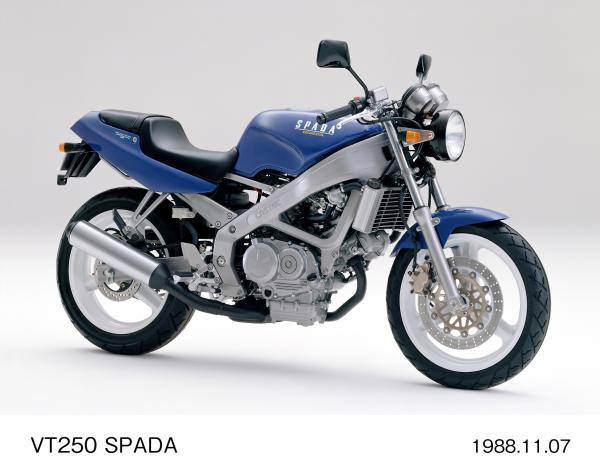Top 10 interesting Hondas you might not know about
Weird and wacky bikes from the Big H
HONDA hasn’t been short of interesting bikes in its long history but the vast majority of them are already given all the plaudits they deserve.
Having said that, there are a few oddballs out there that have somehow dropped from the mainstream consciousness despite interesting engineering, styling or intentions. Here’s a run-down of the top 10 interesting Honda production bikes that you might well never have seen before.
You’ll notice that a large number of these bikes are small-capacity models, largely because most of Honda’s bigger bikes have gone on to success and familiarity (or failure and notoriety) over the years. Honourable mentions, for machines that nearly made the list, should go to the MotoCompo (clever and odd but just too well known) and the MVX250F two-stroke triple (too similar in many ways to the more familiar NS400R, and while interesting due to its layout, it’s most notable feature was its unreliability). The unusual and little-seen XLV750R also missed the cut – again it’s odd and rare, but it lacks redeeming features. They’re all worth a Google if you’re unfamiliar with them, though.
10. Roller Through GoGo
Okay, we’re starting with a bit of a cheat here, as it hasn’t got an engine – but the Roller Through GoGo (or Kick’n’Go as it was called in America) was one of those attempts to create something new that didn’t quite work out as planned. The original was a tilting three-wheeled scooter for kids, but instead of pushing by putting your foot on the ground you’d kick a lever at the back to get going. A more conventional 2-wheeled version and an adult-sized three wheeler followed in '76. Originally the result of an in-house ideas competition at Honda, the bikes were a hit, with the first production run selling out in weeks. Eventually huge numbers were sold but the bike was discontinued in 1976 after two children were killed in accidents while riding them, making them a rare curiosity today.
9. Z100 Monkey
Yeah, yeah, we all know about the Monkey. But what about the bike that came before the famous Z50, the 1961 Z100. Launched a full six years before the classic Z50M – which spawned many imitators and remains in production today, albeit in fuel-injected form and with the rear suspension adopted by the 1974 ‘J’ version – the Z100 and the CZ100 that followed it were the first of the line. Originally intended for use in amusement parks, the Z100 was used for rides at the park on the Suzuka circuit. Never sold to the public, relatively few were ever made and those that survive are enormously valuable today – and rightly so, since they spawned an entire sub-genre of bikes.
8. ZB50 Monkey R
No apologies for dropping another Monkey bike in here, because the Monkey R is simply cool. If the Z100 was the founder of the line, the ZB50 was its pinnacle. Launched in 1987, it took its inspiration from the trend of tuning Z50s and came complete with a beam frame, disc brake and far better suspension than a normal. Only made for a year, production ended in 88.
7. CT50 Motra
If Tonka made a bike, this would be it. Developed to be a recreational machine, along the lines of a two-wheeled Jeep, it used a three-speed gearbox, similar to the C90, but with an additional two-speed stage to give a choice or high or low ratios, just like most off-road cars. Despite the solid appearance, it weighed only 76kg, too. Sadly, like many of the bikes on this list, production was limited – starting in 1982 and ending just a year later. It was only sold in Japan, too, so finding one might be a challenge.
6. Juno M80/M85
While the M80 and the slightly larger M85 weren’t Honda’s first go at a scooter, they represented a huge departure from anything that had gone before when they appeared in 1961. The original Juno K, from 1954, was already a pretty odd machine, with fibreglass bodywork and a weird, tilting sunshade above the windscreen, but the M80, while looking more conventional, was much madder on the mechanical side. It’s powered by a boxer twin engine (just 124cc on the M80, boosted to 169cc on the M85) and used a hydraulic, clutchless transmission. Just like many bikes here, it was dropped after only one year of production, with fewer than 6,000 made of both types.
5. FC50 Beat
To most people a Honda Beat is a two-seater sports car made in the early 90s, but back in 1983 it was the name used for the FC50, a futuristic-looking scooter. It’s here more for its appearance than its innovation, although the 49cc two-stroke single did feature the oddity of ‘V-TACS’ – effectively a rider-operated powervalve in the exhaust. Instead of being automated, the V-TACS system used a pedal operated by the rider’s left heel to engage it. Above 5500rpm, the system increased the bike’s power, but if activated below that speed it had a detrimental effect on performance. You can see why it didn’t catch on, but the idea of what amounted to a sort of ‘boost pedal’ has its own attraction. Then there’s the styling – check out the car-style front grill and twin headlights, and what is the point of using tinted Perspex for bodywork that’s at knee level?
4. Zook
Given that a scooter is, essentially, supposed to be a cheap, simple, fast and lightweight alternative to walking, it’s surprising that the concept has developed these days into such an array of big, bulky and equipment-laden machines. Sure, there’s an appeal to having a bit of bodywork to keep the weather off, and maybe some storage space for your helmet, but the Zook shows how scooters might look if manufacturers had gone the other direction – emphasising simplicity above all. A one-piece plastic body sitting on a frame consisting of one big tube, with an engine integrated into the swingarm and nothing but a seat and handlebars above shin level, the bike was about as minimalist as possible. But it still kept some cunning touches, like a seat specifically designed to put your helmet down on (small enough to fit inside the lid so there was no chance it could fall on the ground). Again, it was a one-year-only deal, made in 1990.
3. Road Fox
You might have heard of the Honda Gyro, a three-wheeled tilting scooter Honda made in the early 80s – proving that Piaggio’s MP3 was by no means the first to use the idea, even if Honda’s design had two rear wheels and one at the front. The whole rear section, including the engine, remains level with the road, while the front end including the seat and bars tilts like a normal bike. The short-lived Road Fox version is a rarity indeed. Instead looking like a scooter (like the ‘Gyro X,’ ‘Joy’ and ‘Just’ versions), a mobility buggy (the ‘Stream’), or plain weird like the roofed ‘Gyro Canopy’ delivery bike that actually proved quite successful in Japan, the Road Fox looks like a cross between a chopper and a beach buggy. In a good way. Apparently the low seat gave it a ‘pleasant, racing-cart sensation.’ Introduced in 1984, it was gone by 1985.
2. AX-1
Given the recent spate of new four-stroke bikes of around 250cc, the AX-1 is starting to look like it might have been made a quarter of a century before its time. When it appeared, in Japan only, in 1988, as a derivative of the NX250, the AX-1 was a bit of an oddball. The combination of alloy wheels and semi-knobby tyres might be commonplace now, in an era of so-called ‘adventure’ bikes, but back in 1988 they were pretty unique. And with a claimed 25bhp from the four-stroke, air-cooled single, while it would hold its own against most modern 250s, it was born into an era when ‘250’ almost always meant ‘2-stroke’ and 45bhp or more. Given the choice of this or a TDR250, you can see why most buyers would have opted for the Yamaha. But today an AX-1 would be a pretty interesting thing to have tucked in the garage.
1. VT250 Spada
If, today, Honda launched a naked sports bike with a cast aluminium frame and a 40bhp, 250cc water-cooled V-twin engine, it would probably go down a storm. So it’s pretty amazing that while the current equivalent in Honda’s range – the newly launched CB300F – gets a 30bhp single and a steel chassis, Honda actually made something so enormously superior way back in 1988. The engine was, of course, the VT250 twin that lives on, in injected (and less powerful) form, in today’s Japanese-market VTR250, but that cast aluminium chassis was decades ahead of its time. Emblazoned with ‘CASTEC’ badges to let you know this wasn’t some extruded, machined or fabricated chassis, the frame looked great, and it wasn’t until well into the current millennium that it started to become common for manufacturers to use cast frames instead of ones welded together from extruded aluminium. Weirdly, the old Spada had a six-speed gearbox, too, while later VTR250s made do with only five ratios. Has time been moving backwards in that particular section of the Honda factory? Perhaps it was a bike out of its time, since sales weren’t too hot and the Spada disappeared from the range before 1989, just a year after it first showed up.
Want more?
Top 10 bikes that deserved better
